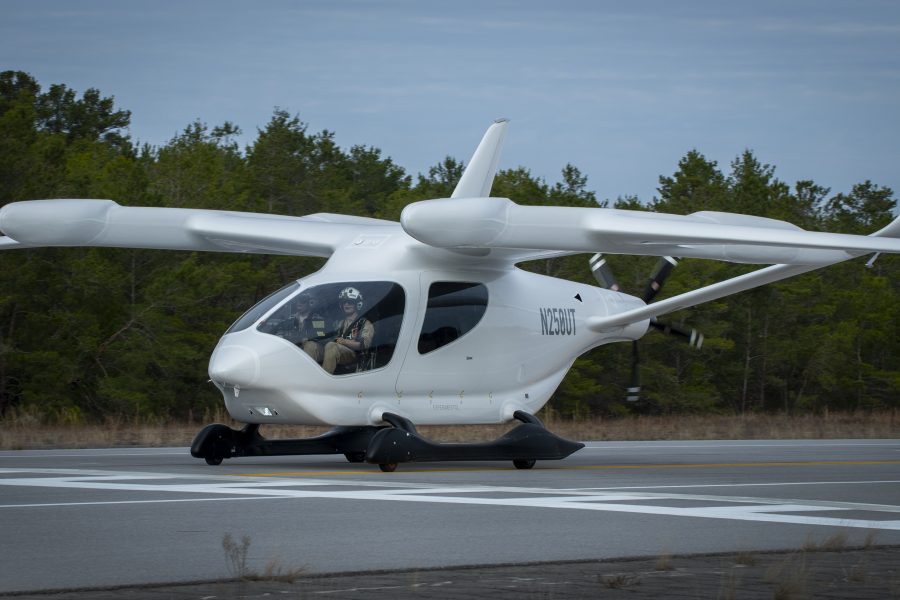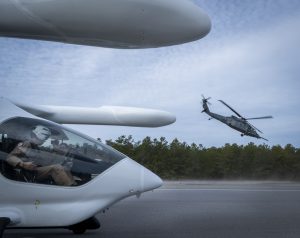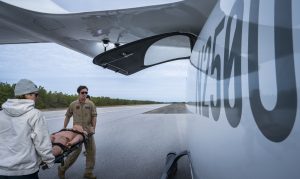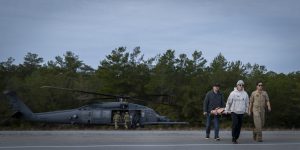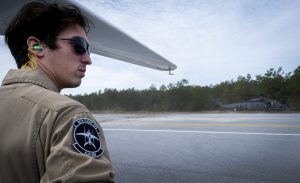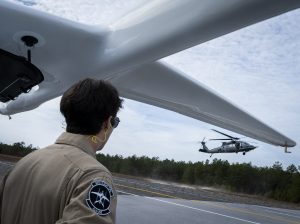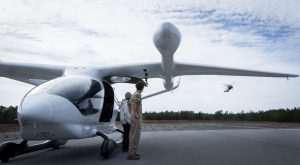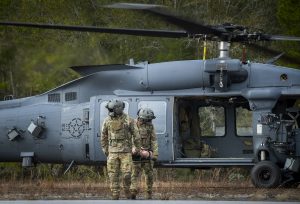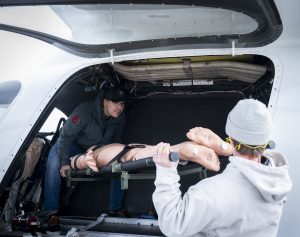The Air Force and BETA Technologies finished a three-month stint of flight testing with its “Alia” electric aircraft at Duke Field, Fla., the contractor announced Jan. 29—which included several milestones for electric aviation within the Department of Defense.
Most prominently, the Air Force’s 96th Test Wing said that on Jan. 11, the sleek, quiet, fixed-wing aircraft flew a simulated casualty evacuation mission and communicated directly with Air Force aircraft for the first time.
The 413th Flight Test Squadron, the Air Force’s rotary wing test squadron, wrote the test and safety plan for Alia, which landed at Duke Field in late October. BETA continued to own and operate the aircraft.
In a release announcing the end of the “deployment,” BETA said Alia’s time at Duke was “the next phase of a larger developmental test and evaluation (DT&E) effort being conducted by the U.S. Air Force to assess electric aviation’s applicability for DOD missions.”
One such mission is getting wounded troops to medical care as quickly as possible.
On Jan. 11, an HH-60W helicopter from the 41st Rescue Squadron transported a simulated casualty from Moody Air Force Base, Ga., to Eglin Air Force Base, Fla., according to the 96th Test Wing release. There, the Air Force aircrew transferred the casualty on a stretcher to the BETA aircrew, who loaded the stretcher into Alia and then flew 68 nautical miles to Duke Field, where it was met by a medical crew.
The transfer took less than 10 minutes, but it could mark the beginning of a shift in how the Air Force approaches the difficult mission of casualty evacuation, when time is of the essence and aircraft are in high demand.
“During these exercises, the goal is to augment the existing fleet with additional low-cost assets to assist in mission execution so battlefield aircraft can stay in the fight,” Maj. Riley Livermore, 413 FLTS Futures Flight commander, said in a statement.
Back in April 2020, the Air Force launched its “Agility Prime” program to spur development in the electric vertical takeoff and landing (eVTOL) aircraft industry. Service leaders said the aircraft could, among other missions, help with search and rescue and medical evacuation—missions that are being rethought amid the Air Force’s push to prepare for competition and possible conflict in the vast Indo-Pacific region.
While the Alia now being tested is a fixed-wing, conventional takeoff and landing aircraft, BETA is also building a vertical takeoff and landing variant and has participated in Agility Prime.
The casualty evacuation mission marked the first ever by an electric aircraft and “demonstrates key impacts electric aviation can have on military services, including increase in response time at the [forward operating base],” BETA’s release stated. “The HH-60 was able to initiate the movement of the Quick Response Force sooner than if it had to move the patient to definitive medical care.”
Additionally, the release pointed out that if the Air Force needed to rely on a C-130 to transport the patient, it would require more crew and more fuel.
On top of the casualty evacuation simulation, the Alia aircraft also completed a simulated Maintenance Recovery Team (MRT) mission, flying to Eglin to pick up a needed part for an F-35 that had landed at Duke.
On the commercial side, electric aircraft are often thought of as future “air taxis,” to quickly and quietly move people in dense urban environments. For the Air Force, they could be useful for logistical problems by moving people and cargo faster than cars or trucks, but more efficiently than large airlifters.
The MRT mission, for example, took about one hour of flight time and cost $25 in electricity. A truck driving the same distance would take four hours and consume $45 in gas, the BETA release said.
The Air Force is pressing ahead with other electric aircraft investments. In September 2023, the service accepted an eVTOL aircraft from Joby Aviation at Edwards Air Force Base, Calif., and it is expected to get another in the near future. USAF has also awarded a contract to Archer Aviation worth up to $142 million for up to six of the company’s aircraft.
